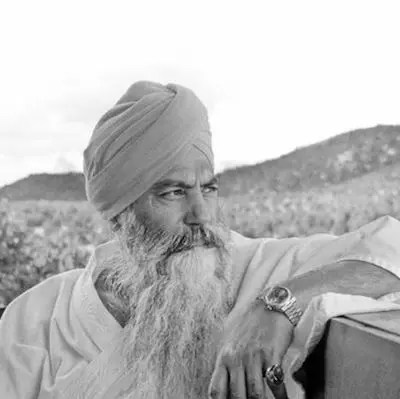Kundalini Meditation

- Griff
Table of Contents
Kundalini is one of the most powerful types of meditation, and it’s becoming more and more popular in Western culture. It’s easy to find Kundalini meditation and yoga classes all around the world, and these tend to attract practitioners from all walks of life.
With a focus on primal energy and the aim of releasing blocked energy pathways, Kundalini meditation is a brilliant practice for those who find themselves stuck in a rut or going through the motions in their day to day life.
When we do the same thing day after day, we lose the connection between the mind and body. Kundalini meditation seeks to move energy throughout the body and out through the chakras. This unblocks stagnant energy pathways, helping to relieve mental, physical and spiritual issues.
Kundalini meditation is seen as a way to cleanse the mind and help manage stress. Balancing your energy can calm your mind and lead to a heightened sense of awareness.
You’ll also find yourself with increased energy levels throughout the day, and many practitioners report leaving the Kundalini class feeling alive and revitalised.
What is Kundalini Meditation?
Kundalini means ‘coiled’ and it refers to the coiled energy that lies at the base of your spine (the root chakra). Kundalini meditation seeks to release this energy. It is different to other meditations because it uses a range of techniques, and it goes hand in hand with Kundalini yoga.
The main ways to practice Kundalini meditation are by deep breathing, mudras (hand movements), mantras and physical movements. It’s often practised in a class with others, as the sense of community further helps bring awareness to the present.
Kundalini meditation can be tricky for beginners, so it’s best initially practiced with the help of a teacher.

History of Kundalini Meditation
Kundalini meditation has been around for thousands of years, although it has developed and evolved over the years.
The traditions of Kundalini meditation date back as far as 1000 B.C – 500 B.C. Kundalini was thought of as a philosophy before the physical practice was developed, and due to there being very few set rules when it comes to Kundalini meditation, it has changed significantly over time.
Kundalini used to be hidden and not taught publicly. It was thought of as a secret practice until a Sikh rebel named Yogi Bhajan began teaching the practice in America in the 60s.
He set up teacher training programmes and trained thousands of Kundalini teachers. In the present day, Kundalini teachers all around the world can link their leanings back to Yogi Bhajan.

What are the Benefits of Kundalini Meditation?
Kundalini meditation is immensely powerful, and many people find their first few sessions overwhelming.
Kundalini meditation tends to lead to more of an awakening than other types of meditation, and physical sensations such as tingling and numbness in the body are not uncommon.
However, Kundalini meditation has a huge range of benefits that span far beyond decreased stress and a more relaxed state of mind. While these are undeniably positive benefits, Kundalini meditation is far more powerful than most beginners expect.
Benefits of Kundalini meditation include a clearer mind, a more developed sense of self and even feelings of ‘awakening’.
Many regular practitioners find themselves living with a greater purpose and intent, often feeling drawn to make changes in their lives and let go of things that might be holding them back.
The everyday and instant benefits include reduced stress and anxiety.
Kundalini meditation offers both instant and long term stress relief, which can then lead to physical health benefits. Conditions linked to high stress such as high blood pressure and insomnia can all be helped.
Kundalini yoga and meditation can give practitioners confidence in their abilities and the self. Many people experience self doubt, but Kundalini meditation helps you to feel worthy of happiness and success, which is why many meditators start to realise they have been ‘settling’ in their lives for something less than they deserve.
Finally, Kundalini meditation can build strength and resilience, helping us to cope when challenges arise. With regular practice, you’ll experience increased love and compassion, which can be directed both towards the self and others.
By releasing blocked energy and connecting with a higher self, we are able to persevere through challenges and give ourselves the love we deserve.
How to Practice Kundalini Meditation
For your first time practising, we recommend attending a Kundalini yoga or meditation class, so you can be guided by a qualified teacher.
Guided online meditations are another good option, although many practitioners find the comradery of a group session both exhilarating and powerful.
If you are practising on your own, you should first find a comfortable position. Sit upright either on a chair or on the floor, and position your hands in a prayer pose.
Many people focus on their third eye chakra or use a mantra to direct their practice.
Start to focus on your breath, trying to make each inhale and exhale last around 3 seconds.
Once you have your focus, divide your breathing into segments, inhaling 4 times with no exhaling, then repeating for the exhale.
When your mind wanders, simply return your attention to the breath. This can be repeated for any length of time, but if you are new to the practice, we recommend practising for no longer than 5 minutes.






